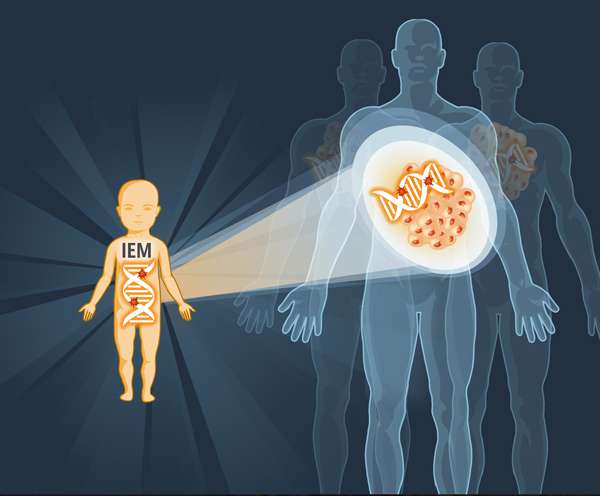Rare disease is a lens on cancer

What can a rare genetic childhood disease teach us about cancer? Dr. Ayelet Erez of the Weizmann Institute's Biological Regulation Department says: "A single-mutation disease can act as a 'lens.' If we find exactly what malfunctions in the sick child, we can zoom in and understand the role of the same gene among the many genetic changes that accompany cancer." In findings that recently appeared in Nature, Erez and a team of researchers used this approach to reveal how a metabolic cycle that is 'broken' in two childhood diseases gets hijacked to benefit cancer cells.
Erez, an MD/PhD, has treated children with a disease called citrullinemia. These children are lacking the activity of a protein known as ASS1; the absence of ASS1 leads to the toxic and, if untreated, fatal, buildup of ammonia in the body.
Many kinds of cancer prevent the expression of the ASS1 gene; silencing indicates a more aggressive cancer and a worse outcome. Yet efforts to develop treatments based on depleting the amino acid this gene produces have only had limited success.
Erez and her research group, led by graduate student Shiran Rabinovich, asked: What if the cancer cell, rather than silencing ASS1 because of what it makes, does so because of what it takes? Knowing that cancer cells often reroute the body's normal metabolic pathways, they looked 'upstream'—at the earlier connections of this protein in its metabolic cycle.
The team located an amino acid called aspartate in the metabolic pathway of ASS1; this amino acid is also required for the production of DNA and RNA. Now the connection was beginning to make sense: Cancer cells need to produce large amounts of DNA and RNA to keep dividing, so silencing ASS1 could be a way of freeing up the aspartate needed to meet the high demand.
An even rarer childhood disease—citrullinemia type II—gave the researchers an additional 'therapeutic lens' on cancer. Here, rather than too much aspartate, there is too little, owing to the loss of another protein called citrin. Children with this disease tend to be smaller than average. "If the loss of citrin, and thus aspartate, could result in smaller children, we thought it might also help us achieve smaller tumors," says Erez.
The team developed a method for blocking citrin and found that certain cancer growth was indeed inhibited by the treatment.
"There are hundreds of rare, hereditary disorders caused by mutations in single genes, and more than a few show up in such common diseases as cancer," says Erez. "So investigating the rare can truly help shed light on the common."
More information: Shiran Rabinovich et al. Diversion of aspartate in ASS1-deficient tumours fosters de novo pyrimidine synthesis, Nature (2015). DOI: 10.1038/nature15529



















